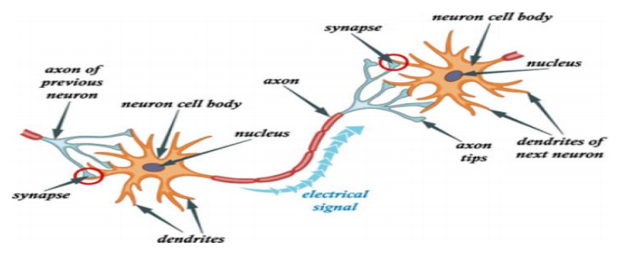Computerized Brain Disease Classification Using Transfer Learning
Keywords:
Brain diseases, Alzheimer, Tumor, Parkinson, Inceptionv3, VGG19, Random Forest, Transfer LearningAbstract
The prevalence of the neuro generative disease is rapidly increasing in recent years. According to WHO nearly 70 million people suffer due to the brain disorders. The types of brain diseases are Alzheimer Disease, Dementia, Brain Tumor, Epilepsy, Mental Disorders, Parkinson’s disease. Among this Alzheimer disease, Brain Tumor, Parkinson’s Disease and seizure disorders are the most common diseases. The main causes of this diseases are the genetic and environmental factors including diet, smoking and traumatic brain injury, diabetes and other medical diseases contribute to the risk of developing this form of diseases. The main purpose of this work is to develop the computerized brain disease detection method. In this proposed work three brain disease are taken namely Alzheimer, Tumor, Parkinson. The inceptionv3 model and VGG19 are used to detect the brain disease. For efficient detection the transfer learning approach is used. In every deep learning model combined with two set of action one is feature extraction and another one is classification. In this proposed work a novel method is implemented. The deep learning models are used only for the feature extraction purpose. The convolutional features are extracted from the brain images and the Random Forest classifier classify the brain diseases in to Alzheimer, Tumor, Parkinson and Normal brain. Comparison of these the Inceptionv3 with Random Forest outperform well with the accuracy of 95%.
Downloads
References
Paolo Preziosa, Paola Valsasina, Massimo Filippi, Maria A. Rocca, “Human Functional MRI”, Translational Methods for Multiple SclerosisResearch, Volume 166, pp 213- 236, 2021.
Ali M. Al-Radaideh, Eman M. Rababah, (2016) The role of magnetic resonance imaging in the diagnosis of Parkinson's disease: a review, Clinical Imaging, Volume 40, Issue 5, ISSN 0899-7071, pp. 987-996.
Rajeesh, J, 2014, Automatic Classification of Alzheimers disease using hippocampus MRI Texture Features, Anna University, [Doctoral Thesis].
Shende, P. ., Vishal Ashok, W. ., Limkar, S. ., D. Kokate, M. ., Lavate, S. ., & Khedkar, G. . (2023). Assessment of Seismic Hazards in Underground Mine Operations using Machine Learning. International Journal on Recent and Innovation Trends in Computing and Communication, 11(2s), 237–243. https://doi.org/10.17762/ijritcc.v11i2s.6142
Justin Dau wels, “Lowing and loss of complexity in Alzheimer’s EEG: two sides of the same coin,” International Journal of Alzheimer’s Disease, February 2011.
Singh, C. ., Gangwar, M. ., & Kumar, U. . (2023). Improving Accuracy of Integrated Neuro-Fuzzy Classifier with FCM based Clustering for Diagnosis of Psychiatric Disorder. International Journal on Recent and Innovation Trends in Computing and Communication, 11(2s), 244–248. https://doi.org/10.17762/ijritcc.v11i2s.6143
Walter Koroshetz, National Institute of Neurological Disorders and Stroke, http://www.ninds.nih.gov/index.htm, American Academy of Neurology (AAN), 2015.
E. Niedermeyer and F. H. Lopes da Silva., Electro encephalography: Basic principles, clinical applications and related fields, Third edition, Lippincott, Williams and Wilkins, Philadelphia, 2019.
C. Melissant, A. Ypma, E. Frietman, and C. Stam, “A method for detection of Alzheimers disease using ICA-enhanced EEG measurements,” Elsevier Artificial Intelligence in Medicine, vol. 33, pp. 209–222, 2015.
Prof. Naveen Jain. (2013). FPGA Implementation of Hardware Architecture for H264/AV Codec Standards. International Journal of New Practices in Management and Engineering, 2(01), 01 - 07. Retrieved from http://ijnpme.org/index.php/IJNPME/article/view/11
Szegedy, C., Vanhoucke, V., Ioffe, S., Shlens, J., and Wojna, Z., “Rethinking the inception architecture for computer vision”, Proceedings in IEEE conference on computer vision and pattern recognition, pp. 2818-2826, 2016.
Ms. Sweta Minj. (2012). Design and Analysis of Class-E Power Amplifier for Wired & Wireless Systems. International Journal of New Practices in Management and Engineering, 1(04), 07 - 13. Retrieved from http://ijnpme.org/index.php/IJNPME/article/view/9
Xia, X., Xu, C., and Nan, B.,” Inception-v3 for Flower Classification”, Proceedings in Second International Conference on Image, Vision and Computing (ICIVC), pp. 783-787, 2017.
Anitha. S, “Improved Classification Accuracy for Diagnosing the Early Stage of Parkinson’s Disease using Alpha Stable Distribution”, The Institution of Electronics and Telecommunication Engineers, 2021.
Zehra Karapinar Senturk, “Early Diagnosis of Parkinson’s Disease using Learning Algorithms”, Medical Hypotheses, Volume 138, 2020.

Downloads
Published
How to Cite
Issue
Section
License

This work is licensed under a Creative Commons Attribution-ShareAlike 4.0 International License.
All papers should be submitted electronically. All submitted manuscripts must be original work that is not under submission at another journal or under consideration for publication in another form, such as a monograph or chapter of a book. Authors of submitted papers are obligated not to submit their paper for publication elsewhere until an editorial decision is rendered on their submission. Further, authors of accepted papers are prohibited from publishing the results in other publications that appear before the paper is published in the Journal unless they receive approval for doing so from the Editor-In-Chief.
IJISAE open access articles are licensed under a Creative Commons Attribution-ShareAlike 4.0 International License. This license lets the audience to give appropriate credit, provide a link to the license, and indicate if changes were made and if they remix, transform, or build upon the material, they must distribute contributions under the same license as the original.





